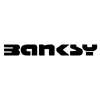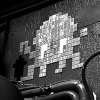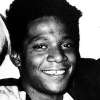Street
& Urban
Discover art for sale. Buy and sell Street & Urban Art prints & editions online. Anti-establishment at its core, Street & Urban Art is not constrained by any one style and has become a cornerstone of 21st century culture.
Art for sale
Movement Overview
Street art can be an act of rebellion or self-expression. Many of today’s famous and outspoken artists first showed their works on street walls, years before they exhibited in galleries or spread their messages through prints and paintings. In 1970s New York, Jean-Michel Basquiat and Al Diaz used their SAMO© graffiti tag to mock the ‘same old shit’ of advertising, religion, politics and life. Today, Banksy’s instantly recognisable murals challenge those in power with dark humour and wit.
The beginnings of Urban & Street Art can be traced back to graffiti writers of the 1960s and 70s, largely from Black and Latino neighbourhoods of New York City. As a means of protest and rebellion, graffiti artists would ‘tag’ their names across urban spaces in New York City, Los Angeles, and Philadelphia with the intention to have their work seen by as many people as possible. Street Art developed from this text-based tradition of ‘tagging,’ moving to incorporate a vast array of, largely unauthorised, image-based visual art in public spaces. In New York, Jean-Michel Basquiat and Keith Haring were both pivotal to this shift towards Street Art. The genre has expanded beyond the US to Europe and the rest of the world, with artists like Banksy and Invader as some of the most famous.
Urban & Street Art is expansive and varied as a genre but one of its most central concerns is its appearance in urban, public spaces. Not following any coherent visual style, Street Art is instead notable for its ephemerality and is ground-breaking for opening ideas of what art can be. The immediacy and power of Street Art lies in its Illegal status and resistance to the market of buying and selling.
Stik’s famous mural, Big Mother from 2014, that was located on the side of Charles Hocking House in Action in West London, demonstrates the contingency and impermanence of Street Art. In 2018 the social housing block, along with Stik’s mural, was demolished and subsequently has remained one of the artist’s most famous works that gets to the root of important social issues.
A defining feature of Street Art is its concern with promoting a personal political agenda. Focusing on issues from advertising, and religion, to politics and life, the movement’s public nature ensures that the work is shown to as large an audience as possible and in a huge variety of locations. Urban & Street artists are renowned for challenging who views art and where, deliberately broadening its audience beyond the confines of the gallery and an elite art world demographic.
Some of the most famous Street artists include Banksy, Jean-Michel Basquiat, Keith Haring, Invader, Stik and KAWS.
Many of the most famous Street artists today keep their identities under wraps, perhaps due to the illegal nature of their artistic practice. Infamously, the French Street artist Invader, who always appears in public behind a mask, has been arrested several times throughout his career and has even been banned from certain countries for his mosaic-based public installations.
Originally from Bristol, the Street Art legend Banksy has spoken of why Street Art’s unsolicited use of public space is crucial to its politics: ‘To some people breaking into property and painting it might seem a little inconsiderate, but in reality, the 30 square centimetres of your brain are trespassed upon every day by teams of marketing experts. Graffiti is a perfectly proportionate response to being sold unattainable goals by a society obsessed with status and infamy. Graffiti is the sight of an unregulated free market getting the kind of art it deserves.’
An important aspect of Street Art is that it is not constrained by any one style, technique or medium. Motivated by communication, Street Art is often visually striking and symbolic, largely using typography or graphic imagery. The plethora of approaches taken by Street artists across the world include stencilling, wheat pasting, sculpture, free-hand painting and other weather-enduring media like the use of ceramic tiles.
Stenciling is one of the most favoured techniques in Urban & Street Art because it easily allows for images and text to be installed in a matter of seconds, reducing the risk of being arrested. Stencils can also be used multiple times, meaning that artists can reproduce the same image across various locations. Prepared before the act of installing, stencils are attached to the wall and spray painted over, producing the final image or text once the stencil is removed.
Banksy epitomises Street Art today, with his anonymity and politically-charged stunts underlining his appeal to the artworld and public at large. Banksy is world-renowned for his satirical and pointed images that address issues of war, capitalism and marginalisation. Indicative of how Street Art has transformed in the last 30 years, Banksy’s work is anti-establishment sensibilities but also plays into the art market, traversing both the streets and the auction house. At the beginning of the Covid-19 pandemic, Banksy installed a public piece on a tube carriage on the London Underground titled, If You Don’t Mask, You Don’t Get. Like much unsolicited Street Art, this was subsequently removed due to Transport for London’s ‘strict anti-graffiti policy’. Contrastingly, another of his most recent pieces, Love Is In The Bin, famously shredded at auction in 2018 and in October 2021 sold for a record breaking price of £18.5 million.
Banksy’s stunts and soaring prices are representative of the dynamism that characterises the Urban & Street art market. The most popular street artists today are regularly at auction, with figures like KAWS breaking into evening sales and consistently selling for millions. At the same time, street artists thrive on the secondary market through prints and editions.
The work of figures like Jean-Michel Basquiat and Keith Haring, historically considered to be street artists, can now generate millions of dollars. Far from their beginnings on the street, in 2019 Basquiat reached US$130 million and Haring’s work on the secondary market came to US$42 million. Contemporary street artists like Invader and Stik are notable for coming into their own on the market since 2019. Other artists such as Mr. Brainwash have asizable primary market presence.
We connect buyers and sellers of original contemporary and modern prints, facilitating discreet, independent, investment led private sales. Fixed, clear and mutually agreed upon between both parties - simple, safe and secure.
MyArtBroker, 55-56 Russell Square, London WC1B 4HP (by appointment only)
875 Washington St, New York, NY 10014, United States (by appointment only)
- © 2025 MyArtBroker. All rights reserved.
- Privacy Policy
- Cookie policy
- Website terms of use
- Terms and conditions






